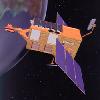Pulse phase resolved spectroscopy is needed when one wants to study,
e.g., the spectral evolution of a pulsating source. Phase resolved
spectroscopy is highly automated through use of the
phaseextract script, which calls our local tool
ikfasebin to compute phase resolved spectra. Currently,
extractions work for event and binned modes of the PCA and for the
HEXTE standard mode. Contrary to LHEASOFT's fasebin tool,
from which ikfasebin has been derived, ikfasebin can
also apply the HEXTE deadtime correction to the data.
To obtain phase resolved spectra, the following steps have to be performed for the PCA:
- Perform a standard extraction of the data with pcaextract, to generate the filter file and the relevant GTI files.
- Extract the the data mode for which phase resolved data are to be extracted using pcaextract, including the -back and -resp keywords to generate background files and the response matrix. Choose energy channels from 0 to 255 (regardless of the channel range of the mode!). Depending on whether you have to do the next step or not, you might want to choose a rather low time resolution to save disk space.
- If you do not know the pulse period, determine it, either from high time resolution data extracted in the previous step or directly from event data, as described in a separate recipe.
- Use phaseextract to generate the phase resolved spectra.
- If the PCA data mode in question is Generic Event , make sure you performed t he standard extraction without the -top keyword. (The data mode has no top layer information, including the -top keyword will lead to a wrong determination of the response matrix).
- If the PCA data mode in question is GoodXenon, run the standard extraction using the -top keyword and set the keyword --toplayer in the later call to phaseextract. If the standard extraction is performed for all layers, the script phaseextract has to be modified (change the parameter l1only=yes to l1only=no) because at the moment for GoodXenon data the phase extraction is performed for top layer only. DO NOT DO THIS WITHOUT FIRST TALKING TO JÖRN.
The phase resolver script phaseextract has the following calling sequence, which is the same as that used in all our RXTE scripts:
phaseextract obsid obspath dirname [arguments]where obsid is the observation ID (e.g., 10241-01-01-00), obspath the path to the raw data, excluding the obsid (normally it will end in something like AO1/P10241), and where dirname is the name of the directory containing the observation.
The most relevant parameters of phaseextract are the following, please note that contrary to our other RXTE scripts, arguments start with two hyphens. A full list can be obtained with the --help switch.
- --datamode=datamode, --ea=ea
- Name and event analyzer for which data are to be extracted. For example, if you want to perform phase resolved spectroscopy on data in subdirectory EA1_B_250ms_128M_0_254 you would set --ea=1 and --datamode=B_250ms_128M_0_254. Both are needed to uniquely identify auxillary files required for the observation.
- --period=period
- The pulse period of the pulsar, in seconds.
- --nph=nph
- The number of phase bins to be extracted.
- --tzero=MJD
- The epoch of the zero phase of the pulse in MJD (optional).
- --asini=asini
- The orbit's projected semi major axis, in light seconds.
- --epoch=MJD OR --epoch90=MJD
- MJD of the epoch of upper conjunction or the epoch of the ascending node.
- --ecc=number
- eccentricity of the orbit
- --omega=number
- The argument of the ascending node, in degrees. Only required for noncircular orbits.

